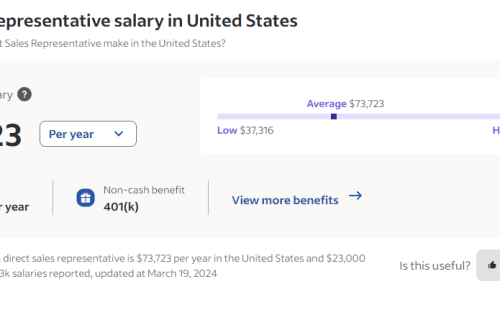Are you interested in writing short stories and making money by publishing them? Look no further than Amazon! With over 300 million active customers, Amazon is the world’s largest online retailer, making it the perfect platform to reach a wide audience for your short stories. And with the rise of self-publishing, getting your stories in front of readers and making a profit has become easier than ever. But how can you ensure that your stories stand out and sell?
In this article, we’ll look at why you need to start writing short stories and provide ten tips on how to write short stories that sell on Amazon.
Short stories are perfect for new authors who want to start with little knowledge about publishing. They offer a unique and exciting opportunity to write for profit and success.
Here are some reasons why short stories can be a great choice for selling on Amazon:
6 Reasons Why You Can Make Money Selling Short Stories on Amazon
1. Short Stories are Quick and Easy to Read
With the rise in mobile phones, e-readers, and other electronic devices, short stories are a great option for those with limited time to read books. Also, their shorter length makes writing short stories much easier than writing a book or novel. This can be helpful when you’re just starting as a writer or pressed for time. In addition, fewer details are involved in writing a short story than in a book. This can make them appealing to a wide audience and increase the likelihood of sales on Amazon.
2. Provide Passive Income
Short stories offer a great opportunity for creating passive income. They take less time to write, publish and sell than a full-length book. Therefore, you can make more money from the same amount of work with short stories. Because of this, you can get paid multiple times for the same piece of writing without spending much time editing or re-publishing them. All you need to do is write the story and post it on Amazon, and you are ready to receive your first profits!
3. Readers Want Them
Some readers love short stories, especially if they are part of a series. Since readers have short attention spans and often don’t have time to read a lengthy novel, some will opt for a short story over reading the full book. If you write short stories that appeal to specific readers, such as romance fans or science fiction lovers, you can increase the likelihood of sales by publishing them on Amazon.
4. Short Stories can be Sold Individually or in Collections
A short story can be sold as an individual work or as part of a collection. Unlike a full-length novel, some readers like to buy collections, especially when given a great discount. Sell your short stories individually and offer them at affordable prices, and you can increase the likelihood of sales by including them in collections. Collections can also be a great way to offer readers a variety of stories and increase sales.
5. Amazon is the Perfect Platform for Short Stories
Amazon has a large audience of readers who are interested in short stories. The platform is also easy for self-publishing, making it an accessible option for writers looking to sell their work. It offers more features that can help you promote your stories, increase traffic and boost sales on Amazon. Many authors are using Amazon as a platform for making a living as an author. If you are thinking about writing short stories for profit or running a business as an author, selling your writing on Amazon can be a great way to do this.
6. Short Stories can be Adapted into Other Formats
One of the greatest things about writing short stories is that they can be adapted into other formats, such as audiobooks, graphic novels, full-length novels, professional screenplays, or even films. This means you can write a short story, pitch it to producers, and turn it into a full-length film or book. This opens up more opportunities for making money through your writing over time.
Here are Some Tips:
1. Create a Compelling Story with Fewer Details
Unlike a full-length novel, a short story will have fewer details about characters, settings, and events. This means you’ll need to focus on the most important elements of the story so that it is interesting enough for readers to buy. It’s also important to ensure your writing style is engaging enough, so they finish reading it.
Here are some tips to help you create a short story that stands out and sells:
- Don’t include many details or focus too much on the setting or characters. Instead, focus on creating an intriguing plot that makes the reader want to know what happens next. Keep things simple and write about events likely to appeal to readers.
- Create a few interesting characters: If you’re writing a romance story, include the main characters and focus most of your attention on them.
- Avoid clichés and writing about what is of no interest to readers. Don’t include adult or objectionable material.
2. Identify your niche
Knowing your intended readers will help you narrow down the story you want to tell. This is important because it can increase the likelihood of making sales on Amazon. This includes asking yourself: What genre do you enjoy writing in? What topics or themes do you excel at? Once you’ve identified your niche, you can start crafting stories that appeal to a specific audience. You can focus on a certain genre or choose topics that appeal to certain readers.
Tips for identifying your niche:
- Know your audience. What are their interests and favorite themes? Are you writing for teenage girls or adult males? Familiarize yourself with what’s popular in the genre you want to write in.
- You can also do market research by searching for keywords related to your preferred niche on Amazon and other book-selling platforms. This can give readers an idea of what topics, styles, and genres are popular.
3. Create Memorable Characters
Characters are the heart of any story. Make sure your characters are well-developed and relatable to your audience. They must be memorable enough for the readers to be interested in them. This is why creating characters that readers will connect with is important. You need to know what makes people tick, so you can tell a story about your characters and make them relevant to your audience.
- Don’t just create one character. Use more than one and make them compelling. Include a wide range of characters so the reader can know all the people and relationships in your story the best.
- Make sure you use active, bold, and realistic language. Make sure your character acts so that he or she isn’t dull. Consistency will keep readers interested in what’s happening to them.
- Spend time creating detailed character profiles and backstories to make them feel real.
4. Think of a Unique Plot
A good short story has a different one, making it stand out from others in the genre. If all short stories are the same, how can readers know which ones to buy? Be creative with your plot. Think of many ways to make your story unique, so it can be original and compelling. That way, readers will be interested in buying it, even if they haven’t read other short stories like yours.
Use unexpected plot twists to change the pace of a story. Limit the use of predictable cliches and use something unexpected.
Tips for creating a unique plot:
- Don’t be afraid to change the formula of your story. This will keep readers interested and improve your writing skills.
- Use a familiar plot, but make it fresh by adding details that make it stand out from other stories in the genre. For example, you can twist a popular love story by creating new characters or setting it in an unusual place.
- Use unexpected plot twists to change the pace of a story. Limit the use of predictable cliches and use something unexpected.
- Make sure your plot has a clear beginning, middle, and end.
5. Write in an Engaging Style
Your story should be interesting, entertaining, and enjoyable to read. It should have a flow that draws the reader in and keeps them engaged. Good short stories have an engaging style that engages readers in what’s going on with the characters and important events in the story. This makes them read the narrative and want to finish the story to know what happens.
- Consider starting with action, dialogue, or a question that piques the reader’s interest.
- Focus on choosing a writing style distinctive from other short stories in your genre. This will help you stand out from others and make your story easier to sell.
- Don’t limit yourself to one particular style. Try different styles as you write and see what appeals to your audience.
- Use dialog humor when necessary but avoid tedious text that readers don’t find enjoyable.
6. Edit the Work for Errors
Don’t rush through editing your work. Ensure it is error-free and your writing has a professional tone. Closely check each paragraph, sentence, and word to ensure no mistakes or misspellings. Also, ensure you’ve used the right word to convey your meaning. You don’t want readers to lose interest in buying your story because of errors or bad writing style.
Tips for editing your story
- Read through your manuscript multiple times to make sure there are no mistakes.
- Have someone else read through it for you and give you feedback. You can use this advice to improve your story, especially if it has problems.
- Don’t use passive voice as much as possible, and avoid using clichés.
- Use grammar apps like Grammarly, Ginger, or Hemingway to ensure mistakes-free writing.
7. Start with a Strong Hook
Whatever story you’re writing, a hook should capture the reader’s attention and make them want to read more. The first few sentences of your story should grab the reader’s attention and make them want to keep reading.
Tips for writing short stories with a strong hook:
- To create a strong hook, try starting with an intriguing question, an interesting character, or a surprising situation that leaves the reader curious and engaged.
- Don’t create a boring opening sentence. Start with a sentence that will intrigue the reader with what’s going on, who’s affected, and what might happen next.
- Don’t use descriptive details as much as possible in your opening lines. You don’t need to be so descriptive that the reader can visualize everything. Use a few vivid details instead of many, and make them clear in your sentences.
- Add something unexpected at the start of your story to make it surprising and compelling.
8. Create Tension
If you want readers to be compelled to read your story, make it exciting. You can create tension when the characters or people in a situation face obstacles or problems that make them worry about what will happen next. This creates suspense and interest, especially when the reader doesn’t know how things unfold.
Tips for creating tension:
- Avoid having a story without conflict. This makes it boring for both writers and readers.
- Create realistic characters, so they can face obstacles and problems. For example, a character might want something but struggle with having it because of his or her actions or circumstances.
- Don’t make the conflicts too unrealistic or hard to solve. The story will be predictable and dull if they are too hard to resolve.
- Don’t give away too much information initially, so readers will want to keep reading. Use just enough information at a time for the audience to remain interested.
9. Keep the Story Simple
You can make your story more interesting by keeping it simple. Short stories are easier to read and understand when you don’t use complicated language or plots. For example, don’t use too many characters or subplots; keep the writing style simple without too much detail.
- Make sure each scene and character serves a purpose in advancing the story.
- Create a simple outline of your story that includes the main plot points and keeps the focus on the main storyline.
- Only include essential details to maintain a clear and concise plot focusing on what matters.
- Use simple language without unnecessary details or complex sentences.
- Limit the use of unfamiliar words. This will make your writing clearer.
- Avoid using complicated subplots and characters that are unnecessary to the story, but just add clutter.
- Focus on a simple plot with a clear beginning, middle, and end. Don’t complicate matters by adding an excess of twists that confuse readers and make it too hard for them to follow what’s going on.
10. Create a strong cover
Your short story must have a professional-looking and appealing cover. A strong cover can make your short story stand out and attract potential readers. It should be visually appealing and accurately reflect the genre and tone of your story.
Tips for creating an attractive cover:
- Keep it simple with a one-color or black-and-white cover.
- Use a professional writing style and tight sentence structure, ensuring the text is concise and easy to read.
- The image on the front of the book should be eye-catching and unique, so readers can look at the cover twice without overwhelming feelings while reading your work. You can place the main character in front of a scenic background.
- Hire a graphic designer to make an eye-catching cover that will stand out among other covers in the genre, or use a pre-made template from a reputable site like Canva or BookBrush.
- Your cover shouldn’t be too crowded with text or images and should focus on one main element.
Selling short stories on Amazon can be a lucrative and rewarding experience. Short stories are a great choice for writers and readers that want to read a quick, lighthearted read without committing to a longer story that may be harder to finish. Amazon offers a great self-publishing platform for writers to get their short stories published and reach readers around the globe. You can earn money for your work, so it’s a great chance for new or experienced authors to showcase their talents. From having a hook that captures readers’ attention to creating tension and keeping your work simple, these tips can help you write better stories.
By following these tips and taking action, you can increase your chances of success and build a loyal readership. So what are you waiting for? Get writing and start selling your stories today.



